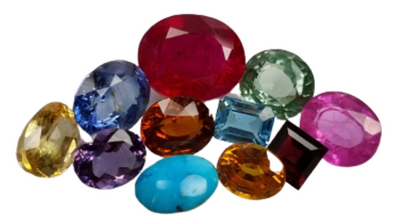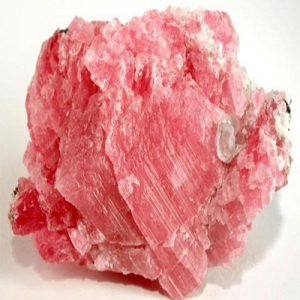Rhodochrosite: Gemstone Information
Rhodochrosite is a captivating mineral renowned for its stunning pink to rose-red coloration and distinctive banding patterns. It belongs to the carbonate mineral group and has the chemical formula MnCO3, indicating its composition of manganese carbonate. The name “rhodochrosite” is derived from the Greek words “rhodon,” meaning rose, and “khros,” meaning color, reflecting its characteristic pink hues.
Physical Properties:
Rhodochrosite exhibits several notable physical properties:
Color: Its most striking feature is its vibrant pink to rose-red color, which can range from pale pink to deep red. The intensity and saturation of the color vary depending on factors such as impurities and crystal structure.
Crystal Structure: Rhodochrosite typically forms in the trigonal crystal system, often occurring as rhombohedral or scalenohedral crystals. It may also appear in massive, granular, or botryoidal formations.
Transparency: While transparent specimens of rhodochrosite are rare, it commonly exhibits translucency to opaque properties.
Luster: The mineral typically displays a vitreous to pearly luster, giving it a soft sheen when polished.
Hardness: Rhodochrosite has a Mohs hardness of around 3.5 to 4, making it relatively soft compared to many other gemstones and minerals.
Occurrence:
Rhodochrosite is primarily found in hydrothermal veins and sedimentary deposits associated with manganese ores. It often forms in association with other minerals such as calcite, quartz, pyrite, and fluorite. Notable occurrences of rhodochrosite include deposits in Argentina, Peru, South Africa, the United States (Colorado), Mexico, and Romania. The Capillitas Mine in Argentina is renowned for producing exquisite rhodochrosite specimens with distinct banding patterns.
Uses:
Gemstone: Rhodochrosite’s captivating color and unique banding patterns make it a popular choice for use in jewelry. It is often cut into cabochons, beads, or faceted gemstones for use in rings, pendants, earrings, and other accessories. While relatively soft, rhodochrosite is suitable for occasional wear jewelry pieces, but care must be taken to prevent scratching or damage.
Collector’s Specimen: Collectors value rhodochrosite for its aesthetic appeal and rarity. Specimens displaying vibrant color, distinct banding, and well-defined crystal formations are highly sought after and can command significant prices in the mineral market.
Metaphysical and Healing Properties: In metaphysical practices, rhodochrosite is believed to possess various healing and emotional balancing properties. It is associated with promoting love, compassion, self-worth, and emotional healing. Some practitioners use rhodochrosite in meditation, chakra balancing, and energy work to stimulate the heart chakra and enhance feelings of joy and inner peace.
Geological Significance:
Rhodochrosite’s presence often indicates the presence of manganese deposits in a geological setting. As a mineral of economic importance, it is mined for its manganese content, which is used in various industrial applications, including steel production, batteries, ceramics, and fertilizers.
Conclusion:
Rhodochrosite is a captivating mineral prized for its vibrant pink to rose-red color, unique banding patterns, and association with manganese deposits. Whether admired for its aesthetic beauty, metaphysical properties, or geological significance, rhodochrosite continues to captivate enthusiasts, collectors, and researchers around the world. Its presence in jewelry, mineral collections, and industrial applications underscores its enduring appeal and significance in various fields.





